Broccoli, scientifically called Brassica oleracea var. italica, belongs to the cabbage family. It is a versatile and nutritious vegetable that is popular for its health benefits and delicious taste. Broccoli is not only delicious but also packed with essential vitamins and minerals. Due to its versatile culinary uses, Broccoli farming plays a major role in the agriculture industry.
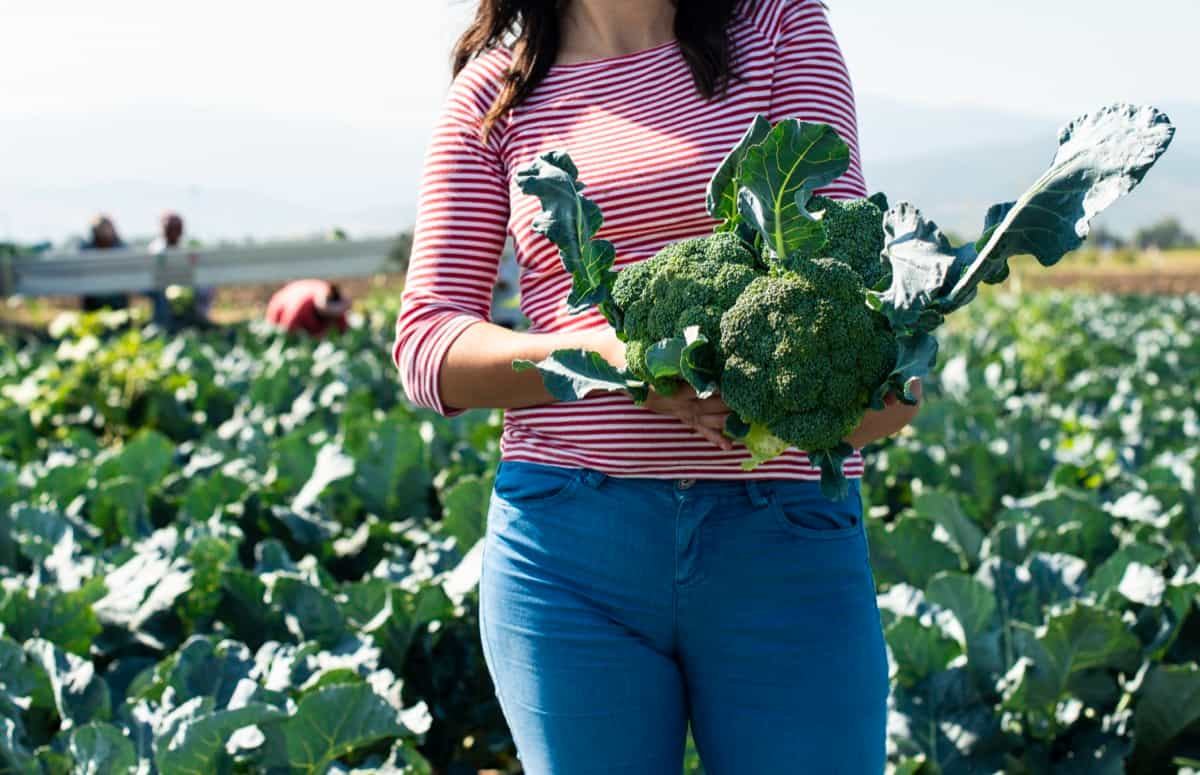
Planning Your Broccoli Farm
Site selection is crucial – look for a location with plenty of sunlight and well-draining soil. Conduct soil tests to ensure the pH levels are optimal for Broccoli cultivation. Choose a location with suitable soil and climate conditions for growing Broccoli. Do market research to understand the demand for Broccoli in your area. Identify potential buyers such as grocery stores, farmers’ markets, restaurants, and wholesalers.
Determine the optimal planting time based on your location and climate. Broccoli can be started from seeds or transplants. Provide proper plant care, including watering, fertilizing, and pest management. Remember to monitor your crop regularly for any signs of pests or diseases. Implement IPm strategies to minimize damage without relying heavily on chemical pesticides.
Site Selection
Choose a site location that receives plenty of sunlight throughout the day, as Broccoli thrives in full sun. Additionally, ensure that the site has good drainage to prevent waterlogging, which can cause some problems. A slightly sloping area can help with natural drainage. Consider some factors such as proximity to water sources for irrigation purposes and access to transportation for easy transportation of produce.
An ideal site will also have protection from strong winds that could damage young plants. Take into account any existing vegetation or structures that could impact sunlight exposure or airflow around your Broccoli crop. Clearing away obstacles will help optimize growing conditions.
Soil Preparation
Preparing the soil properly is essential before planting your Broccoli seeds or seedlings. Start by choosing a well-draining site with plenty of sunlight for optimal growth. Remove any debris and weeds from the area to create a clean planting space. Testing the pH level of the soil is also important, as Broccoli thrives in slightly acidic soils with a pH range between 6.0 and 7.0. You can adjust the pH by applying lime to increase it or sulfur to lower it accordingly. Applying organic matter to the soil can help improve its fertility, providing essential nutrients for your Broccoli plants.
In case you missed it: Chinese Broccoli Farming: How to Plant and Grow Kailan/Gai Lan
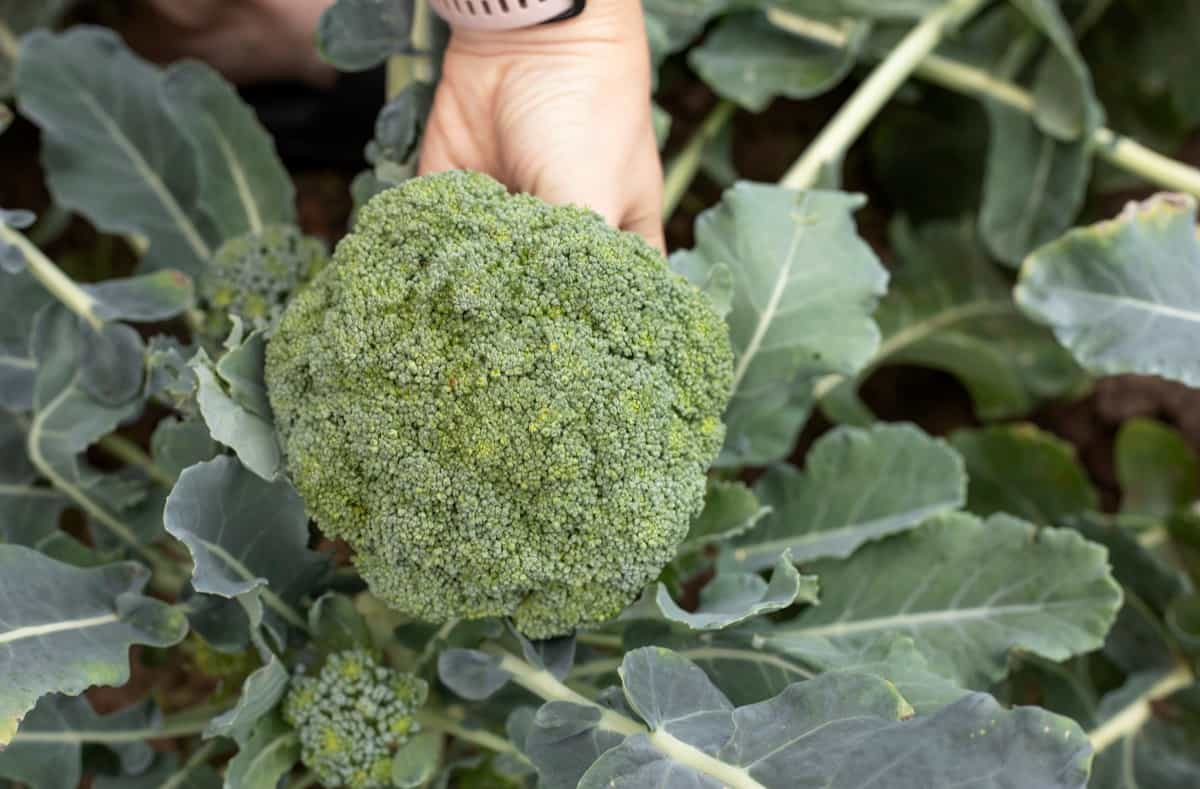
Broccoli Varieties
There are several different types of Broccoli varieties available, each with its unique growing requirements. The popular variety is Calabrese Broccoli, known for its large heads and earthy flavor. Romanesco Broccoli stands out with its striking appearance of fractal-like spirals, making it a visually appealing choice for farmers and consumers alike. Another well-loved variety is Purple Sprouting Broccoli, which offers tender shoots and vibrant purple hues that add color to any dish.
De Cicco Broccoli is a reliable heirloom variety that produces smaller heads but boasts excellent flavor. For those looking for early harvests, consider Early Dividend Broccoli or Green Goliath Broccoli varieties. Each type has its advantages and unique traits that cater to different preferences in taste and timing.
Seed Selection and Germination
Before planting, carefully choose high-quality Broccoli seeds from reputable suppliers. Look for Broccoli varieties that are well-suited to your climate and soil conditions. Check the seed packet information to ensure that the seeds you select have good germination rates. If you prefer sustainable farming practices, opt for certified organic or non-GMO seeds. When making your seed selection, consider factors like disease resistance and yield potential.
To promote optimal germination, sow the seeds at the correct depth based on the instructions on the seed packet. Keep the soil moist but not waterlogged during the germination process. Provide adequate warmth and sunlight to encourage strong seedling growth. Broccoli seeds typically germinate best in temperatures between 15°C to 24°C. Warmer temperatures can speed up germination, but temperatures above 27°C can inhibit it.
Monitor your Broccoli seeds closely as they germinate, looking out for any signs of poor growth or diseases. While Broccoli seeds don’t require light to germinate, once they sprout, they need ample light to grow into healthy seedlings. Place them in a location with plenty of sunlight or provide artificial grow lights if necessary. Under optimal conditions, Broccoli seeds typically germinate within 5 to 10 days. However, germination can take longer if conditions are not ideal.
Transplanting Broccoli Seedlings
Once your seedlings have grown to a certain size, it’s time to transplant them into the field carefully. Make sure to choose a day with mild weather for this delicate operation. Before transplanting, water the seedlings thoroughly to help ease their transition from the nursery to the field. Dig holes in rows according to your planting plan and gently remove each seedling from its container, being not to damage the roots.
In case you missed it: How to Start Romanesco Broccoli Farming: A Step-by-Step Growing Guide
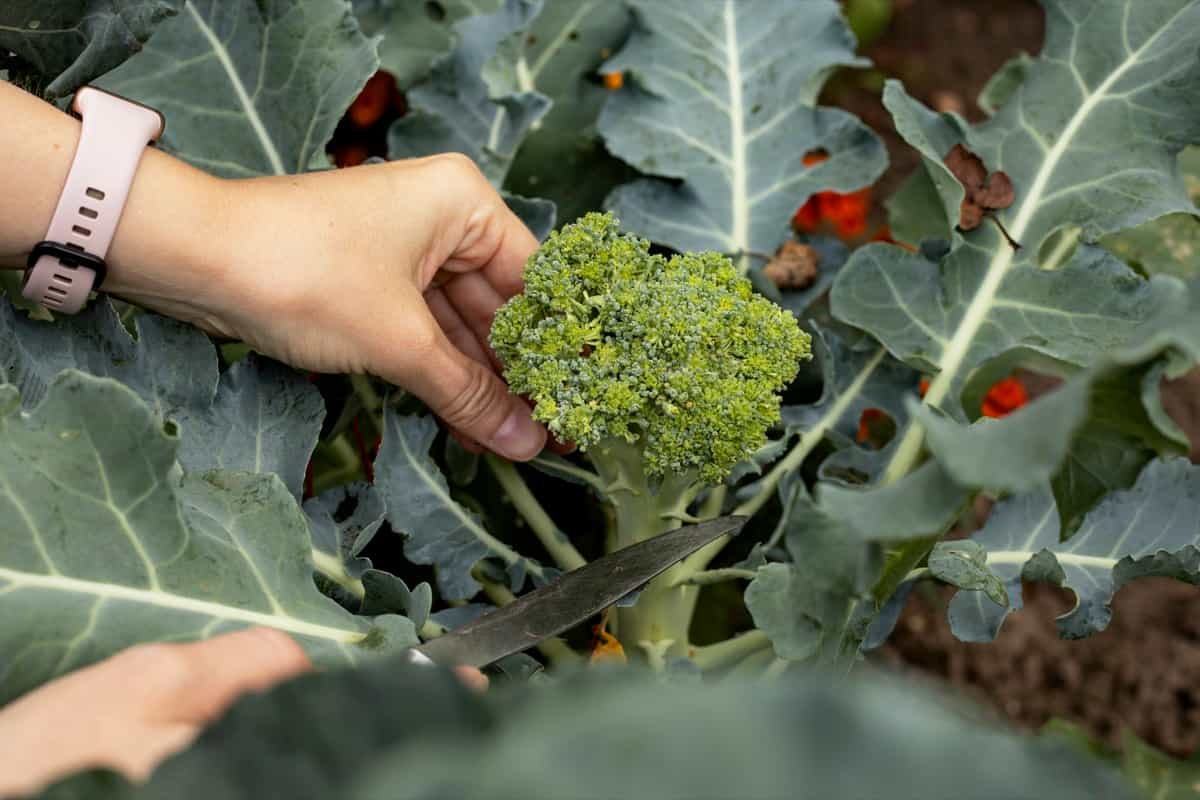
Place each seedling in its designated hole and press the soil firmly around it to secure it in place. Water them again after transplanting to help settle the soil around plant roots and reduce any stress they may experience. Remember that proper spacing between plants is essential for optimal growth, so make sure you follow recommended guidelines when transplanting your Broccoli seedlings.
Irrigation Management
Broccoli plants need consistent moisture to thrive and produce high-quality heads. When it comes to irrigation, timing is key. Water your Broccoli plants early in the morning or late in the evening to minimize evaporation losses. Drip irrigation systems are often recommended for Broccoli farming.
They deliver water to the root zone, reducing water waste and minimizing weed growth. Monitoring soil moisture levels regularly is essential for ensuring your Broccoli plants are getting adequate hydration without being overwatered. Adjusting your irrigation schedule based on weather conditions can help prevent nutrient leaching due to excessive watering.
Fertilization Strategies for Broccoli
Broccoli is considered a heavy feeder, meaning it requires sufficient nutrients to thrive throughout its growing cycle. Before planting Broccoli, conduct soil tests to determine the nutrient levels and pH balance of your soil. Based on the results, choose a balanced fertilizer with the right mix of NPK for Broccoli cultivation.
During transplanting or when seedlings are established, side-dress with nitrogen-rich fertilizers to promote leafy growth and avoid over-fertilizing. As this problem can lead to nutrient imbalances and negatively impact plant health, consider organic options like compost or manure for long-term soil fertility benefits.
Pest and Disease Management
Pests such as aphids, caterpillars, and flea beetles can wreak havoc on Broccoli crops if left unchecked. Implementing IPM practices can help control these pesky invaders without relying heavily on harmful chemicals. Diseases like black rot, clubroot, and downy mildew are common threats to Broccoli plants. Proper crop rotation, maintaining good airflow between plants, and using disease-resistant varieties are effective ways to prevent the spread of diseases in your Broccoli farm.
Regular scouting of your crops can help detect pests or diseases early on so that prompt action can be taken. Utilizing organic methods like neem oil or introducing beneficial insects can also aid in managing pests naturally. Plant Broccoli varieties that are resistant to common diseases in your area, if available. Keep an eye out for signs of disease, such as yellowing or wilting leaves, and take action to prevent the spread of disease to other plants.
In case you missed it: How to Start Broccoli Farming in USA: A Step-by-Step Guide to Planting to Harvesting
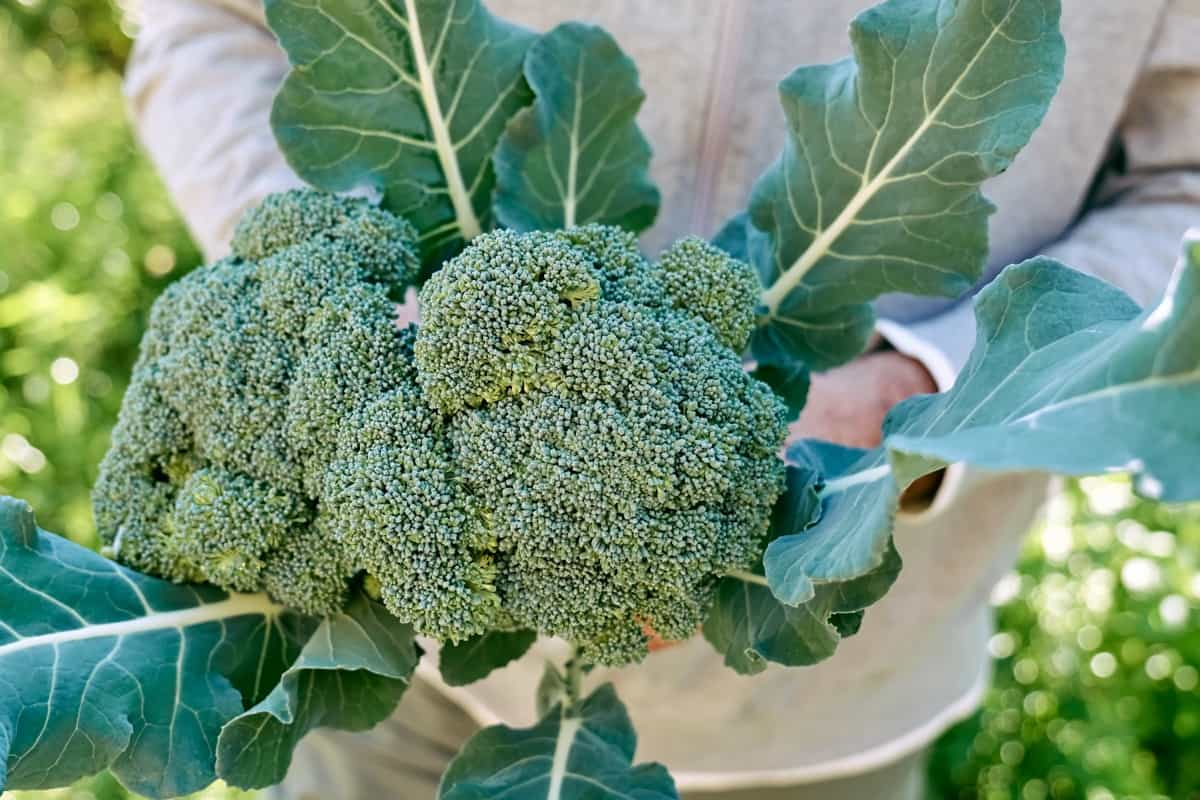
Weed Control Techniques
Weeds compete with Broccoli plants for nutrients, water, and sunlight, ultimately affecting their growth and yield. To effectively manage weeds in your Broccoli farm, there are several techniques you can employ. One common method is hand weeding, where you manually remove weeds from the soil to prevent them from overtaking your crop. This method is labor-intensive but ensures targeted weed removal without harming the Broccoli plants.
Mulching is another effective weed control technique that involves covering the soil around Broccoli plants with organic materials like straw or wood chips. Mulch helps suppress weed growth by preventing weed seeds from germinating. Crop rotation is a proactive approach to weed management. It disrupts the life cycle of weeds by planting different crops in succession on the same plot of land.
This practice can help reduce weed populations naturally over time. Integrating cover crops into your farming system can also help control weeds by outcompeting them for resources while improving soil health. By implementing these techniques, you can maintain a weed-free environment for your thriving Broccoli crop.
Monitoring Broccoli Growth
Keep a close eye on your plants to ensure they are developing as expected. Regularly check for any nutrient deficiencies, pests, or diseases that could hinder their growth. Keep track of the germination rate and emergence of seedlings. Note any issues, such as poor germination or damping-off disease, which can affect early growth. Monitor seedling growth, including the development of true leaves and the overall vigor of the plants. Ensure they obtain adequate light, water, and nutrients to promote strong growth.
Measure the height of the plants and monitor the size and color of the florets. This will give you an indication of whether your Broccoli is thriving or if adjustments need to be made in your cultivation practices. Make sure to inspect the leaves for any discoloration or unusual spots that may indicate issues. Keep track of the days to maturity for the Broccoli variety you’re growing and harvest heads at the appropriate stage. Overly mature heads may become tough or bitter, while harvesting too early may result in smaller heads.
Keep track of how much water and fertilizer you are using to ensure your Broccoli is getting the right amount of nutrients. By monitoring these factors closely, you can make timely interventions if needed to support optimal growth and harvest quality. Once ready for harvesting, proper processing and packaging techniques will help keep the quality of your produce. And finally, effective marketing strategies will allow you to showcase your Broccoli products to potential customers.
In case you missed it: Top 16 Steps/Ways to Boost Broccoli Yield: How to Increase Production, Size, and Quality
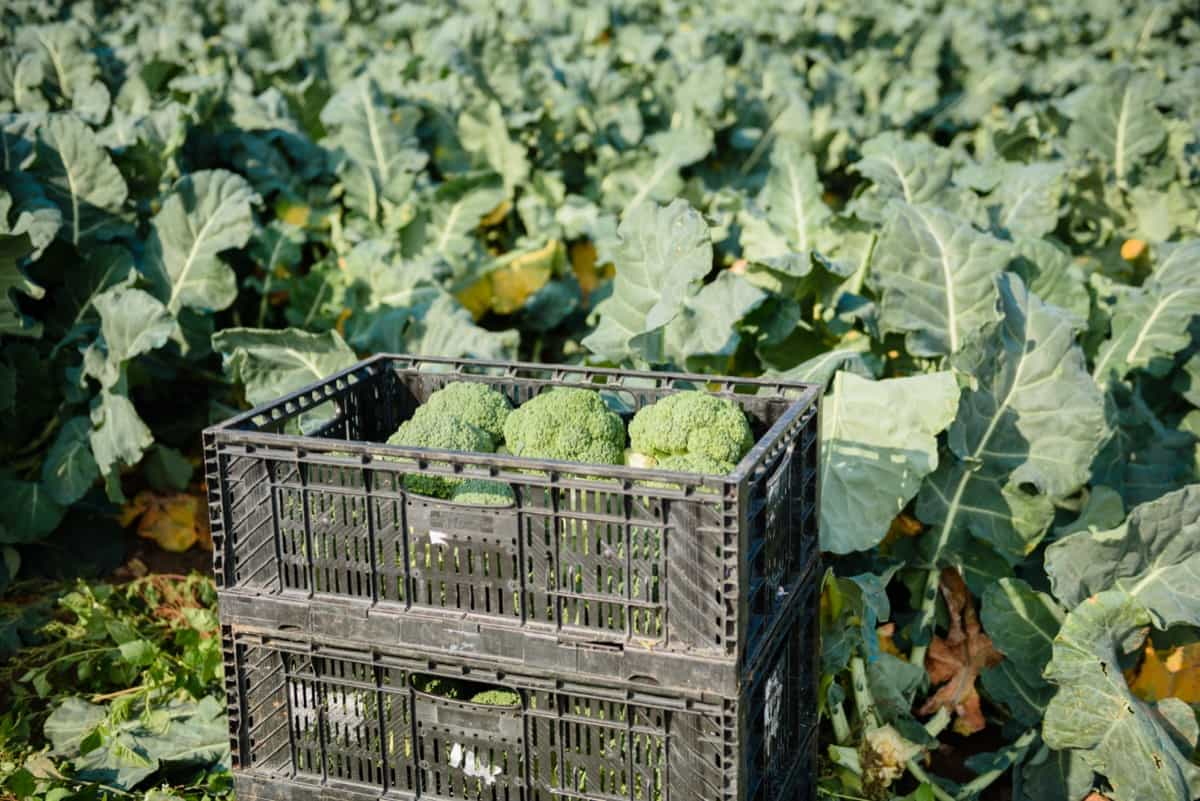
Harvesting Broccoli
After carefully tending to your Broccoli crop, it’s finally time to harvest the fruits of your labor. Harvesting Broccoli at the correct time is crucial for optimal flavor and nutritional value. When the heads are firm and compact, with tight green florets, they are ready to be picked.
To harvest Broccoli, use sharp shears to cut the main head about 5-6 inches below its ideal size. Be sure not to wait too long, as over-mature heads can become tough and bitter. After cutting the main head, smaller side shoots will continue to be harvested later for additional yield. Once harvested, store Broccoli in a cool place or refrigerate it promptly to maintain freshness.
Broccoli Processing and Packaging
Once your Broccoli is harvested, it’s time to move on to the processing and packaging stage. This step is crucial to ensure that your Broccoli reaches consumers in top condition. Firstly, the freshly picked Broccoli heads need to be cleaned to remove debris. This can be done by washing them gently in cold water. Next, the Broccoli should be trimmed and sorted according to size and quality standards. Only the best heads should make it through for packaging. Packaging is important in preserving the freshness of Broccoli.
Whether you choose plastic bags or containers, make sure they are well-sealed to maintain optimal moisture levels. Labeling is essential for providing customers with important information such as nutritional content and farming practices used. Store the packaged Broccoli in cool temperatures until it’s ready for distribution.
Marketing Broccoli Products
Once you have successfully harvested your fresh and vibrant Broccoli, it’s time to think about marketing your products. As a superfood, Broccoli is growing in popularity, and there is a high demand for it in the market. Establish relationships with local grocery stores, farmers’ markets, and restaurants to market your Broccoli products effectively. Offer them samples of your Broccoli or create eye-catching displays that showcase the freshness and quality of your produce.
In case you missed it: Innovative Strategies for Boosting Coconut Pollination and Yield
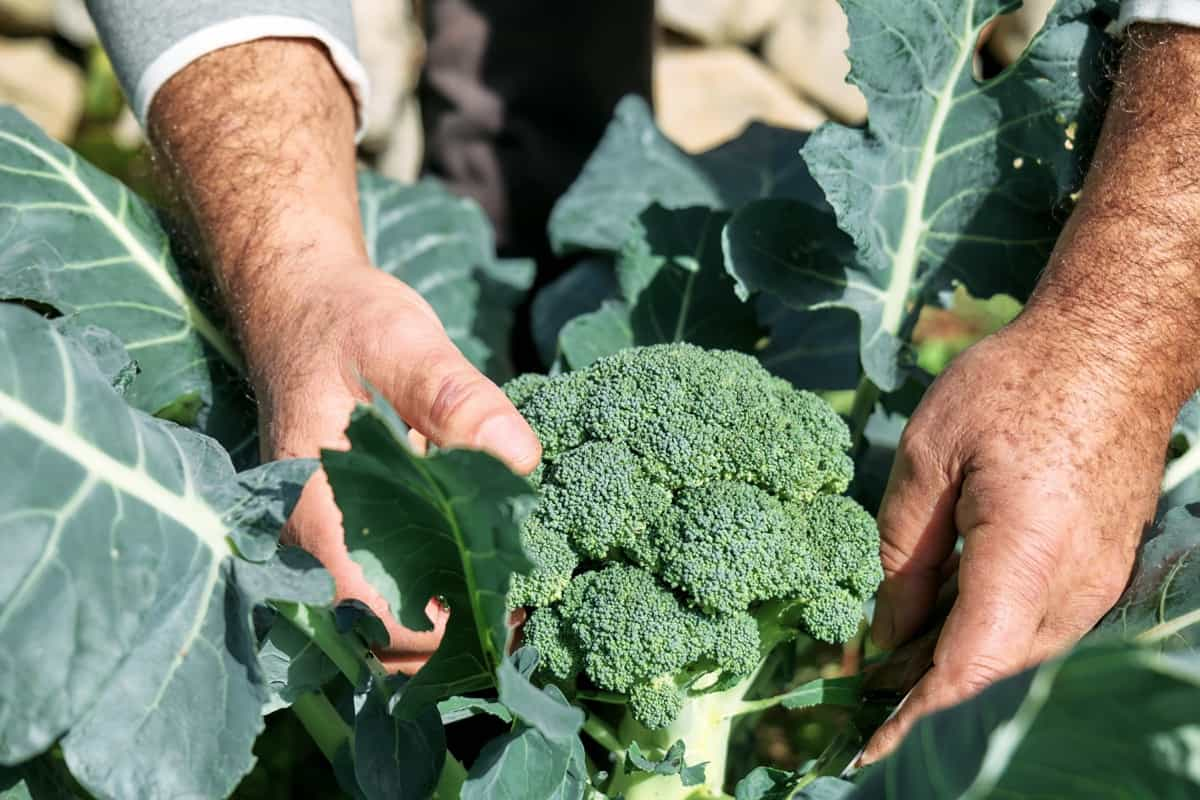
Utilize social media platforms to promote your Broccoli farm and products. Share pictures of your farm, behind-the-scenes glimpses, recipes featuring Broccoli, and customer testimonials. Engage with your audience by hosting online contests or giveaways. Consider partnering with meal kit delivery services or local food co-ops to reach a wider audience. Package your Broccoli in attractive containers with clear labeling that highlights its health benefits and freshness. By following the step-by-step for planting Broccoli, you can successfully grow and harvest this nutritious vegetable.
- Types of Pesticides Used in Agriculture: A Beginner’s Guide
- Economical Aquaculture: A Guide to Low-Budget Fish Farming
- 15 Common Planting Errors That Can Doom Your Fruit Trees
- How to Make Houseplants Bushy: Effective Tips and Ideas
- Innovative Strategies for Boosting Coconut Pollination and Yield
- Pollination Strategies for Maximum Pumpkin Yield
- The Complete Guide to Chicken Fattening: Strategies for Maximum Growth
- Natural Solutions for Tulip Problems: 100% Effective Remedies for Leaf and Bulb-Related Issues
- Revolutionizing Citrus Preservation: Towards a Healthier, Greener Future
- Natural Solutions for Peony Leaf and Flower Problems: 100% Effective Remedies
- Maximizing Profits with Avocado Contract Farming in India: A Comprehensive Guide
- Natural Solutions for Hydrangea Problems: 100% Effective Remedies for Leaf and Flowers
- The Ultimate Guide to Choosing the Perfect Foliage Friend: Bringing Life Indoors
- From Sunlight to Sustainability: 15 Ways to Use Solar Technology in Agriculture
- The Ultimate Guide to Dong Tao Chicken: Exploring from History to Raising
- The Eco-Friendly Makeover: How to Convert Your Unused Swimming Pool into a Fish Pond
- Mastering the Art of Delaware Chicken Farming: Essentials for Healthy Backyard Flocks
- 20 Best Homemade Fertilizers for Money Plant: DIY Recipes and Application Methods
- How to Craft a Comprehensive Free-Range Chicken Farming Business Plan
- Brighten Your Flock: Raising Easter Egger Chickens for Beauty and Bounty
- How to Optimize Your Poultry Egg Farm Business Plan with These Strategies
- Subsidy for Spirulina Cultivation: How Indian Government Schemes Encouraging Spirulina Farmers
- Ultimate Guide to Raising Dominique Chickens: Breeding, Feeding, Egg-Production, and Care
- Mastering the Art of Raising Jersey Giant Chickens: Care, Feeding, and More
- Ultimate Guide to Raising Legbar Chickens: Breeding, Farming Practices, Diet, Egg-Production
- How to Raise Welsummer Chickens: A Comprehensive Guide for Beginners
- How to Protect Indoor Plants in Winter: A Comprehensive Guide
- Ultimate Guide to Grow Bag Gardening: Tips, Tricks, and Planting Ideas for Urban Gardeners
- Guide to Lotus Cultivation: How to Propagate, Plant, Grow, Care, Cost, and Profit
- Agriculture Drone Subsidy Scheme: Government Kisan Subsidy, License, and How to Apply Online
- Ultimate Guide to Raising Araucana Chickens: Breed Profile, Farming Economics, Diet, and Care
- Bringing Hydroponics to Classroom: Importance, Benefits of Learning for School Students
- Ultimate Guide to Raising Polish Chickens: Breed Profile, Farming Economics, Diet, and Care
- Ultimate Guide to Raising Australorp Chickens: Profile, Farming Economics, Egg Production, Diet, and Care
- Silkie Chicken Farming: Raising Practices, Varieties, Egg Production, Diet, and Care
- Sussex Chicken Farming: Raising Practices, Varieties, Egg Production, Diet and Care
Thanks for good explanation u r giving young farmer. Am glad and happy to start broccoli farming
Hi.
Thank for Broccol education
I’m a Tanzanian a country located in East Africa,
Region Kilimanjaro, where the highest peak in Africa is.
I think the climate condition of this region is better for Broccol farming
Thanks
Broccoli fram problem plz